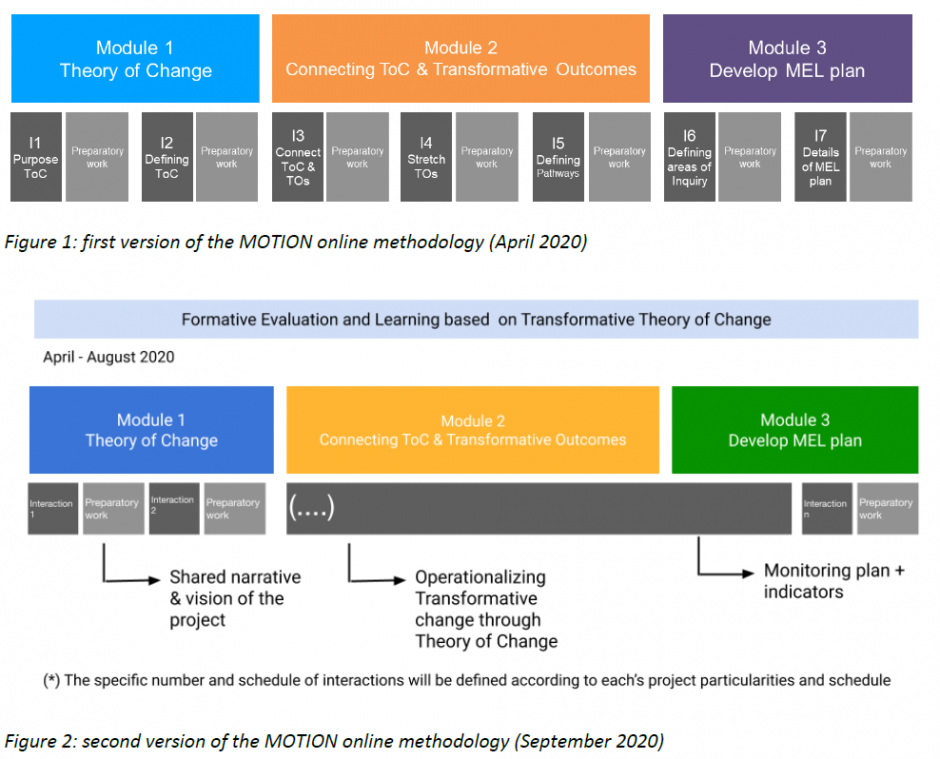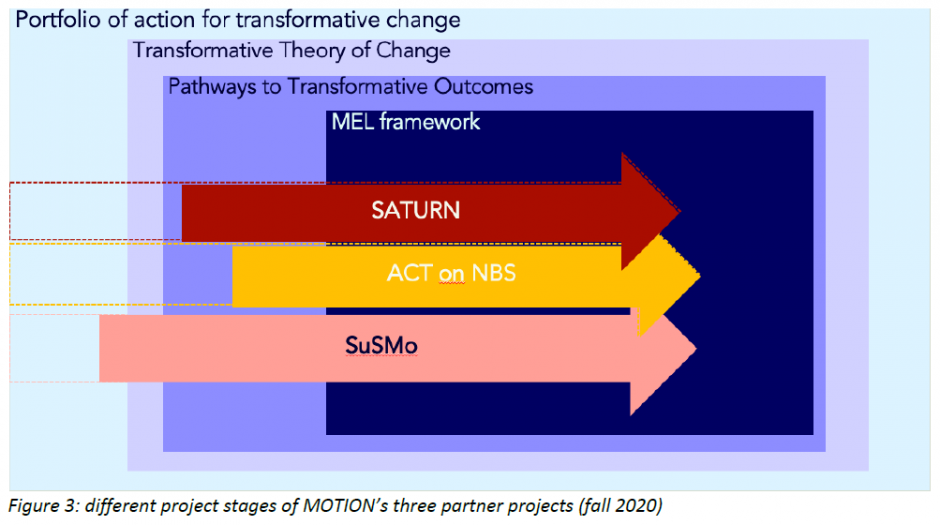Moving applied research online during the Corona crisis
Opinion
25 Feb 2021
In March 2020 the Corona crisis hit the MOTION project, just as it hit the world, at full force. Supported by EIT Climate-KIC, in partnership with the Transformative Innovation Policy Consortium (TIPC), MOTION helps policymakers, funders and more to develop an approach for transforming systems, enables regions and cities to rethink and improve their capacity to drive sustainable change, develops tools for capacity building and technical assistance, and offers training in its methodology. This blog, the first in a four-part series, offers some insights in how MOTION, through learning-by-doing, adapted its methodology to an online format, the challenges it faced, its breakthroughs and best practices. Read on for a lightly-edited version of MOTION’s original post, which first appeared on the TIPC website.
The Corona crisis offered us an opportunity to critically challenge some of the core assumptions of our approach, and we realised that adapting the methodology to an online format potentially allowed us to greatly reduce our own carbon footprint, as well as make MOTION’s outcomes much more accessible to future partners in countries all over the world.
In March 2020 the project was ready to start its prototyping and testing phase, during which we worked with three partner projects from the EIT Climate-KIC portfolio: (1) SuSMo, on sustainable shared mobility (2) ACT on NBS, on nature based solutions to urban problems, such as pollution or water management, and (3) SATURN, which aims to find a more holistic approach to bring natural assets back to cities, for instance through smallscale urban farming, which fosters community-building and local, healthy food production.
Challenges for the MOTION methodology in the online world
The MOTION methodology helps its partner projects (SuSMo, ACT on NBS and SATURN) to develop a transformative Theory of Change: a roadmap for maximising the projects’ transformative potential. The MOTION team is an external party that creates an intervention in an ongoing project to unlock and maximise its potential for systems transformation. We therefore rely heavily on creating an environment of trust with the partner projects, where they can express their visions, ideas and assumptions about their projects, and feel safe to reflect, question and stretch their thinking about transformation. The methodology relied on workshops of two to three days where we could bring together MOTION, partner projects and EIT Climate-KIC stakeholders, in a process of co-creation. However, when the Corona crisis hit it became impossible to even meet direct colleagues, let alone travel to host the MOTION workshops. Working remotely started very energetically for all of us, but after our first week we were exhausted from the average of six hours per day of online meetings, starting early, working late, home schooling children, dealing with unsuitable housing facilities, and partners or spouses trying to find new routines as well. It was apparent that simply moving our regular schedules online would not work, let alone hosting online workshops that lasted for two or three days.
We needed to adapt the MOTION methodology to an online format and decided to break down the format for the first and second (of a total of four) workshops into a series of online interactions that were limited to 90 minutes per session. Originally, we envisioned seven sessions combined with preparatory work in between, but after six months of implementation, our initial approach changed considerably, as elaborated below and made visible in figure 1 and 2. As with any innovation project, it has been months of exploring, improving and learning.

Lessons learned
While the project is still ongoing and we are still working on a finalised version of the methodology, there are a number of principles we learned and incorporated in designing and adapting our online approach which we believe are useful to others embarking on a similar road. Lesson 1: Don’t assume every project you encounter will work in the same way. In our first version of the online approach, we had envisioned seven interactions of approximately 90 minutes each. We quickly learned that our three partner projects were in varying stages of developing a transformative Theory of Change (figure 3), and had very different contexts, needs and time preferences. One project preferred shorter interactions (approx. 60 mins) on a hub-level, whereas the other actually preferred longer interactions on a project level (typically 120 mins, with multiple interactions per day). We have thus learned that it is impossible to work with a default schedule without first understanding the specific contexts of the partners.

Find a structured way to improvise
The MOTION team is formed by researchers from three institutions, and each institution took responsibility for one of the partner projects. With the implementation developing differently in each project we needed to take a step back to analyse how these different pathways of implementation influenced the overarching goals of the MOTION project. In the end, our goal is to co-create and test the MOTION methodology, and in doing so, understanding the different conditions that have shaped the implementation phase is key. We organised weekly team meetings to foster collaboration and alignment on the portfolio level, worked on collective documentation for the three projects, implemented a feedback loop to exchange on the different pathways followed in each project, and collectively discussed future challenges and advised each other on issues we encountered in each of the projects. While this might seem standard practice for private sector organizations, in academia we are often used to work in silos – with a lot of freedom on how to work through a project. But since this is an innovation project and having tangible and applicable results is key, this meant adapting our academic way of working as well.
Interactive sessions and meticulous organisation are important for successful interaction
In order to make the online interactions a success it was even more important to set very clear goals and desired outcomes for each interaction. We included a lot of interactive group work to make sure participants would not be too fatigued. If sessions would last longer, or multiple sessions were scheduled on one day, we included more time for breaks or offline assignments. A well-functioning technical platform is very important, as well as good preparation for each session. We made it a habit to assign the following roles within the team:
- Chair (for plenary sessions, timekeeping, etc.)
- Facilitation (to lead group discussions)
- Note-taking
- Time-keeping
- Technical support (very important to support participants, solving problems, etc.)
- Moderating (including the meeting chat)
However, multiple roles could be filled by one person. Within MOTION the chair would often take a technical role, responsible for chairing the meeting, keeping the time and moderating discussions, incorporating questions in the meeting chat.
To conclude, in 2020, we, the MOTION team, succeeded in finding a way to take our work online, albeit in a very different way than we expected at the beginning of the pandemic.



